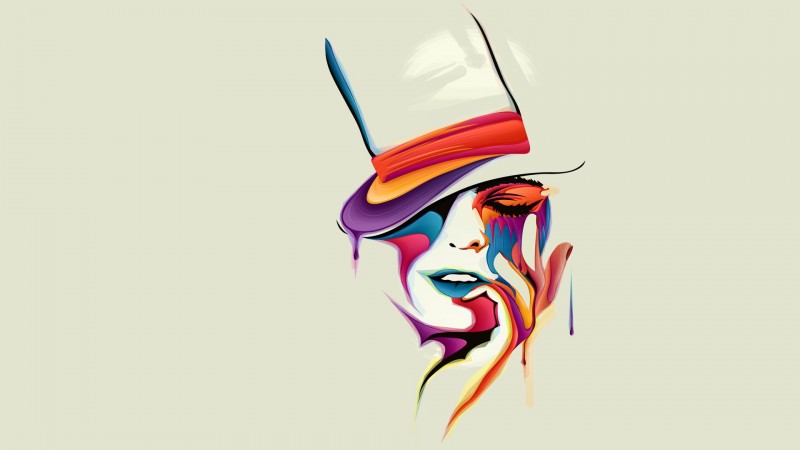General Forms And Art Techniques
The creative arts are often divided into more specific categories, typically along perceptually distinguishable categories such as media, genre, styles, add form. Art form refers to the elements of art that are independent of its interpretation or significance. It covers the methods adopted by the artist and the physical composition of the artwork, primarily non-semantic aspects of the work (i.e., figurae), such as color, contour, dimension, medium, melody, space, texture, and value. Form may also include visual design principles, such as arrangement, balance, contrast, emphasis, harmony, proportion, proximity, and rhythm.
In general there are three schools of philosophy regarding art, focusing respectively on form, content, and context.
Extreme Formalism is the view that all aesthetic properties of art are formal (that is, part of the art form). Philosophers almost universally reject this view and hold that the properties and aesthetics of art extend beyond materials, techniques, and form. Unfortunately, there is little consensus on terminology for these informal properties. Some authors refer to subject matter and content – i.e., denotations and connotations – while others prefer terms like meaning and significance.
Extreme Intentionalism holds that authorial intent plays a decisive role in the meaning of a work of art, conveying the content or essential main idea, while all other interpretations can be discarded. It defines the subject as the persons or idea represented, and the content as the artist's experience of that subject. For example, the composition of Napoleon I on his Imperial Throne is partly borrowed from the Statue of Zeus at Olympia. As evidenced by the title, the subject is Napoleon, and the content is Ingres's representation of Napoleon as "Emperor-God beyond time and space". Similarly to extreme formalism, philosophers typically reject extreme intentionalism, because art may have multiple ambiguous meanings and authorial intent may be unknowable and thus irrelevant. Its restrictive interpretation is "socially unhealthy, philosophically unreal, and politically unwise".
Finally, the developing theory of post-structuralism studies art's significance in a cultural context, such as the ideas, emotions, and reactions prompted by a work. The cultural context often reduces to the artist's techniques and intentions, in which case analysis proceeds along lines similar to formalism and intentionalism. However, in other cases historical and material conditions may predominate, such as religious and philosophical convictions, sociopolitical and economic structures, or even climate and geography. Art criticism continues to grow and develop alongside art.
Morden Art
Modern art includes artistic work produced during the period extending roughly from the 1860s to the 1970s, and denotes the style and philosophy of the art produced during that era. The term is usually associated with art in which the traditions of the past have been thrown aside in a spirit of experimentation. Modern artists experimented with new ways of seeing and with fresh ideas about the nature of materials and functions of art. A tendency away from the narrative, which was characteristic for the traditional arts, toward abstraction is characteristic of much modern art. More recent artistic production is often called contemporary art or postmodern art.
Modern art begins with the heritage of painters like Vincent van Gogh, Paul Cézanne, Paul Gauguin, Georges Seurat and Henri de Toulouse-Lautrec all of whom were essential for the development of modern art. At the beginning of the 20th century Henri Matisse and several other young artists including the pre-cubists Georges Braque, André Derain, Raoul Dufy, Jean Metzinger and Maurice de Vlaminck revolutionized the Paris art world with "wild", multi-colored, expressive landscapes and figure paintings that the critics called Fauvism. Matisse's two versions of The Dance signified a key point in his career and in the development of modern painting. It reflected Matisse's incipient fascination with primitive art: the intense warm color of the figures against the cool blue-green background and the rhythmical succession of the dancing nudes convey the feelings of emotional liberation and hedonism.
Initially influenced by Toulouse-Lautrec, Gauguin and other late 19th century innovators, Pablo Picasso made his first cubist paintings based on Cézanne's idea that all depiction of nature can be reduced to three solids: cube, sphere and cone. With the painting Les Demoiselles d'Avignon (1907), Picasso dramatically created a new and radical picture depicting a raw and primitive brothel scene with five prostitutes, violently painted women, reminiscent of African tribal masks and his own new Cubist inventions. Analytic cubism was jointly developed by Picasso and Georges Braque, exemplified by Violin and Candlestick, Paris, from about 1908 through 1912. Analytic cubism, the first clear manifestation of cubism, was followed by Synthetic cubism, practiced by Braque, Picasso, Fernand Léger, Juan Gris, Albert Gleizes, Marcel Duchamp and several other artists into the 1920s. Synthetic cubism is characterized by the introduction of different textures, surfaces, collage elements, papier collé and a large variety of merged subject matter.
